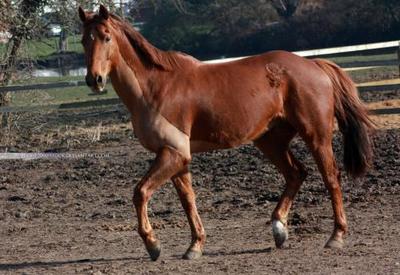
What makes a British Warmblood is a topic of confusion for many, although it is generally accepted to be an amalgamation of the Thoroughbred and various European breeds including, for example, the Hanoverian and the Trakehner, providing it is British-born. That said, the term ‘warmblood’ is often used to describe a particular type of horse, rather than a breed.
To demonstrate much better where the confusion lies, the Cleveland Bay is a warmblood horse native to Yorkshire, although it doesn’t take the name ‘British Warmblood.’ This is just one example. Similarly, there are British horses combining Thoroughbred and native draught horse blood that also aren’t classified under this heading.
Theoretically, the British Warmblood we know today began life in 1977 with the foundation of the British Warmblood society. Historically, breeding a warmblood meant crossing ‘hot-blooded’ performance horses with ‘cold-blooded’ draught horses, producing a horse capable of many disciplines.
The British Warmblood is designed to excel in competitive riding, with a particular aptitude for show jumping and dressage. To fulfil this design, the British Warmblood is slightly larger than other horses, and is slightly longer in the back. Its muscular legs give it strength and speed, as well as an attractive overall appearance. Most British warmbloods are solid colours, such as black, bay or chestnut, which are favoured in the show ring.
Do you own a British Warmblood? Let others know what they're like!
Related products
Advantage 80 Spot On Flea Control Large Cats and Rabbits
from £12.95
Advantage 40 Spot On Flea Control Cats, Small Dogs and Rabbits
from £12.95
Advantage 250 Spot On Flea Control Large Dog
from £12.95
Advantage 100 Spot On Flea Control Medium Dog
from £12.95
Drontal Tasty Bone Wormer Tablets for Small & Medium Dogs (2 to 20kg)
from £2.15
TermaWorm™ Tablets for Cats & Dogs
from £1.79
Drontal Tasty Bone XL Wormer Tablets for Large Dogs (Over 20kg)
from £6.39
Advantage 400 Spot On Flea Control Extra Large Dog
from £12.95